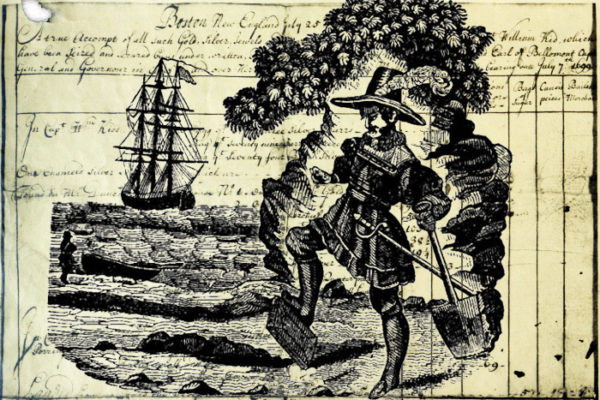



Proof of its authenticity was a 15th-century cannon on the wreck site, which is directly out from the beach upon which archaeologists had discovered the site of Columbus' fort, precisely as Columbus wrote in his diary. On, it was reported by The Independent that a team led by Clifford believed they had found the wreck of the Santa Maria, flagship of Christopher Columbus. The expedition is featured in the History Channel documentary 'Pirate Island'. In 2010 Clifford returned to lead an expedition to identify the other shipwrecks at Île Sainte-Marie. Also ongoing off the Haitian coast is an archaeological survey project that has tentatively identified four shipwrecks associated with Henry Morgan, including Morgan's flagship The Oxford. His work as a Discovery "Quest" Scholar to locate this site was the subject of a May 2004 Discovery Channel documentary 'Quest for Columbus'. In an ongoing project, Clifford is working to identify suspected in-situ remains of the Santa María - flagship of Christopher Columbus in his first travel to the Indies, wrecked near modern Cap-Haïtien on Christmas Day in 1492. At the time two other shipwrecks were believed to be in the same area.Īfter discovering and decoding cryptic rock carvings, he then used ground-penetrating radar to locate and chart an apparent tunnel-complex, similar to the Oak Island Money Pit, which may have been constructed by late-17th-century pirates. In 19, Clifford and his project team completed three expeditions to Île Sainte-Marie off the coast of Madagascar, as a Discovery Channel Expedition Adventure initiative and tentatively identified the pirate ship Adventure Galley (flagship of William Kidd) and another pirate ship which could be the Fiery Dragon (commanded by the pirate Christopher Condent, also known as William Condon). He graduated from Maine Central Institute in Pittsfield, Maine before earning a bachelor's degree in History and Sociology from Western Colorado University in Gunnison, Colorado, and received graduate training at Bridgewater State College in Bridgewater, Massachusetts. The Whydah Project has been called "a model of underwater archaeology" by the Massachusetts Board of Underwater Archaeological Resources.īorn in 1945 on Cape Cod, Barry Clifford has been involved in underwater exploration for most of his adult life. In 2022, a permanent museum named Real Pirates was opened in Salem, Massachusetts displaying more artifacts from the shipwreck. A smaller selection of artifacts was previously on an international touring exhibition through a National Geographic/ Premier Exhibitions joint venture, called Real Pirates. Coast Guard.Ĭlifford maintains a large private facility in which the majority of the Whydah artifacts are kept for conservation and examination however, Clifford exhibits a variety of the ship's artifacts, as well as from many other shipwreck discoveries, for the public to enjoy at his Whydah Pirate Museum in West Yarmouth, Massachusetts. Clifford also has exclusive dive rights to the site, which is patrolled by the National Park Service and U.S. Barry Clifford (born May 30, 1945) is an American underwater archaeological explorer, best known for discovering the remains of Samuel Bellamy's wrecked pirate ship Whydah which, together with La Louise of French pirate La Buse ( Olivier Levasseur), is a fully verified and authenticated pirate shipwreck of the Golden Age of Piracy discovered in the world – as such, artifacts from the wreck provide historians with unique insights into the material, political and social culture of early 18th-century piracy.Ĭiting federal admiralty law in 1988, the Massachusetts Supreme Court ruled that 100% of the Whydah rightfully belonged to Clifford, and he has kept The Whydah Collection intact without selling a single piece of the more than 200,000 recovered artifacts, which includes tens of thousands of coins, more than 60 cannon, and the "everyday" objects used by the crew.


 0 kommentar(er)
0 kommentar(er)
